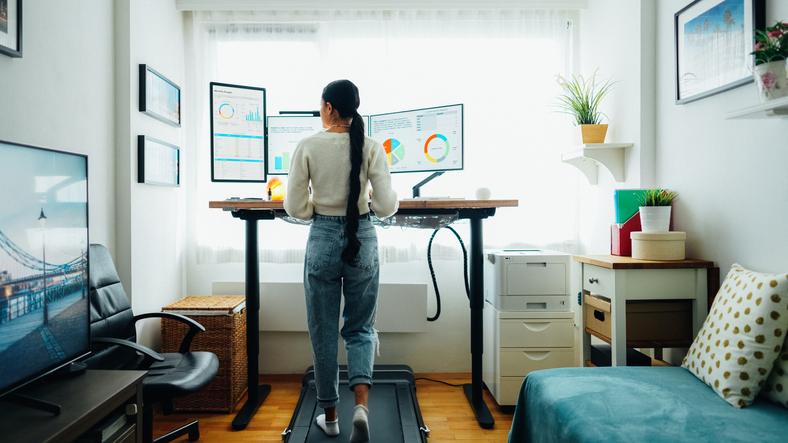Working remotely will have a big impact on employee physical health. However, that doesn’t mean it has to be negative. Although employee commuting might have a few steps when going to the pantry or meeting rooms, the commuting time saved can be re-routed into more walking if planned out well.
We can encourage remote workers to be physically active in a few ways – and they don’t necessarily have to be costly.
Why is 10k Steps the goal?
There’s a lot of discussion around whether or not 10,000 steps is too little or too much. The number is arbitrary but the important thing is that it gives employees a goal to work towards. This number is a popular benchmark because it adds up to about 5 miles, which has shown links to a lowered risk of acquiring lifestyle diseases.
And while the 10,000-step goal isn’t the end-all and won’t always work for every situation, it’s a good place to start. The CDC recommends about 21 minutes of exercise each day and walking that many steps will easily meet that recommendation. A healthier body leads to more energy, more focus, and less stress which are all factors that affect productivity.
Our Marketing Director Pete Schauer likes working remotely because it has improved his physical and mental health. Pete stated “It gives me the flexibility to work out on my lunch break or in between calls. The gym I go to is around the corner from my house, so a lot of my lunch breaks are either spent at the gym or on the stationary bike in my basement. On the days that I don’t work out, I like to try and take my dogs for a walk to get some fresh air and keep the three of us active.”
Strategy #1: Walking Around During Work Calls
Most of the popular conferencing platforms we use have a corresponding app they can download on their phones. In fact, your CRM probably has an app version too, and often, we have meetings that are audio only. Instead of having calls strictly on a desktop computer or laptop, encourage using the app and walking around during calls.
This won’t be possible for all video calls but once your team knows that you encourage this behavior, it gives them the permission to try it which allows more steps to be walked more often. Our Lead SEO Strategist Ashley Rodriguez loves to take calls on her walking pad and stand-up desk.
Strategy #2 Encourage Taking Walking Breaks Throughout the Day
Breaks are part of regular work hours and it will be a good idea to remind your team every now and then to take walking breaks. Most employees take 2-3 breaks in a day and that allows them a good opportunity to leave their desk, get some steps in, and come back to the task at hand with a fresher state of mind.
By reminding your team (and yourself) to take walking breaks, you promote a healthy work environment and work-life balance. Sitting for prolonged periods can have negative effects on our health, which will later impact the quality and quantity of work we can do.
Sometimes when you’re stuck on a task and seem to be getting nowhere, it is an opportune time to take a walking break and clear your mind. When Mike Brayton our PPC strategist is trying to clear his mind from one client strategy to the next client strategy he will take his dog for a walk and get the brain flowing plus the dog is happy!
Strategy #3 Employer-led Walking Challenges
This strategy is encouraging because it gives employees the feeling that you care about their well-being outside of work. Something as simple as bragging rights on conference calls or callouts in group chats is a simple way to acknowledge the effort team members make to reach a certain step count goal.
When the weather isn’t cooperating, investing in affordable treadmills with an incline is an effective way to get steps in without enduring the harsh weather. However everyone goes about their steps, it’s important to keep your team leaders involved since direct reports often follow their team leader’s actions/goals.
Strategy #4 Offer Virtual Classes
It is simply much more fun to get exercise when you’re doing it with other teammates. Walking is often seen as monotonous but when you’re in a conversation with others or in a virtual class together, that makes it a social event too.
Organize small virtual classes for different times of the day, which allows members working at different times to enjoy other people’s company while getting their steps in. This helps expand their inner circle which will help when it comes time to collaborate on different projects.
Conclusion
Without question, physical activity helps us all stay sharp and mentally focused. The good news is that something as simple (and sustainable) as walking will offer an added benefit to both our lives outside of work and while doing work as well.
It matters that a culture of activity starts with your business and your leaders to make this plan effective and a win for all parties involved.

